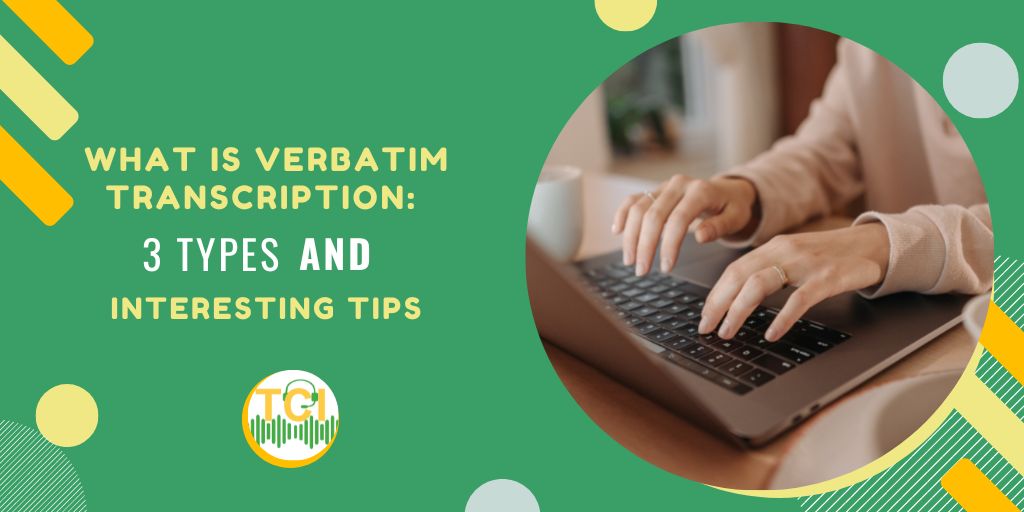
Transcription is a well-known business service where speech gets converted into electronic or written text documents. Pre-recorded audio files or video files are converted into a written format using such transcription services.
According to a report, the demand for business transcription in 2022 is valued at USD2.95 billion and is expected to surpass USD11.7 billion by 2032.
The transcriptions can either be done by using software or typing manually. One of the popular kinds of transcriptions is verbatim transcriptions. Read on to know about such transcriptions along with verbatim examples.
If you are wondering, “what does verbatim mean,” here is your answer - as per the dictionary, verbatim means to quote, copy, or transcribe the exact same words as were used or spoken originally.
In verbatim transcription, it is ditto word-for-word transcription of a live event or a recording. Such transcription proves to be helpful as a reference frame for a deposition, interview, panel session, and similar events.
Verbatim transcriptions include the exact spoken words, including stutters, pauses, and other expressions. Verbatim is considered the standard for the highest level of speech transcription for court and legal proceedings.
Now that you know and understand the verbatim meaning, it is time to focus on the verbatim format.
Let us explain the globally acceptable verbatim transcription format with an example:
Spoken question: At what time did you go to the party?
Spoken answer: Well, ummm, I think it was around 6 in the evening or so.
Verbatim transcription: Well, ummm, I think it was around 6 in the evening or so.
Clean or non-verbatim transcription: I think it was around 6 in the evening or so.
To put it in simple words what the example given above shows is that verbatim transcription captures the words which are spoken exactly, including the pauses, false starts, stutters, and filler words.
To put it in simple words what the example given above shows is that verbatim transcription captures the words which are spoken exactly, including the pauses, false starts, stutters, and filler words.
On the other hand, clean verbatim captures the words as spoken exactly, but there is editing, making the transcription short, precise, and straight to the point. Repeated words, fillers, stutters, pauses, etc. are all removed during the editing process.
Also read: Verbatim vs Non-Verbatim Transcription: Differences, Requirements, & Jobs
Verbatim transcription - It was, you know, like, an experience of a lifetime.
Clean transcription – It was an experience of a lifetime.
Clean verbatim proves to be highly effective in business-focused areas where unnecessary spoken words are redundant. However, in legal settings where things like the personality and the tone of the speaker are also taken into account, verbatim transcription provides the most accurate data and the best idea.
Verbatim – In verbatim transcription, all the words including errors or false starts are included, but repetitions and stuttering are cut off so that it helps in easy reading. Filler words like ‘ah’ or ‘hmmm’ or ‘ummm’ do not make the cut in this verbatim transcription.
True verbatim – True verbatim transcription, also known as full verbatim transcription, captures the nitty-gritty of every dialogue or speech. Every single utterance is recorded in a manner that the true essence of the dialogue is captured along with the context in which the speech was made. This kind of transcription is very difficult to handle for a manual transcriber.
There are many places where verbatim transcription is used. You will often see that such transcription services are used for
Source quotes – True verbatim transcriptions and clean transcriptions are mostly used, depending on the requirement.
Research studies and focus group discussions – Depending on the nature of the study, full verbatim or clean transcriptions are used.
The global transcription market is predicted to grow at a CAGR of 14.7% by 2032 and verbatim transcription is an important part of it. Whether your client is a legal firm, a research organization, or an interviewer, you will need to hone your verbatim transcription skills to present an accurate and quality transcript to them. So, start learning and practicing creating verbatim transcripts now.
If you are interested in learning more about verbatim transcription or transcription, in particular, we have got you covered. At Transcription Certificate Institute (TCI), we have a plethora of lessons on various transcription skills that can help enhance your transcription career. Enroll in the transcription course online and become a proficient transcriber today!
Your TRANSCRIPTION CAREER CAPSULE to Help You BOOST Your Potential
Latest Industry News, Jobs, Tips and More..

Comments are closed